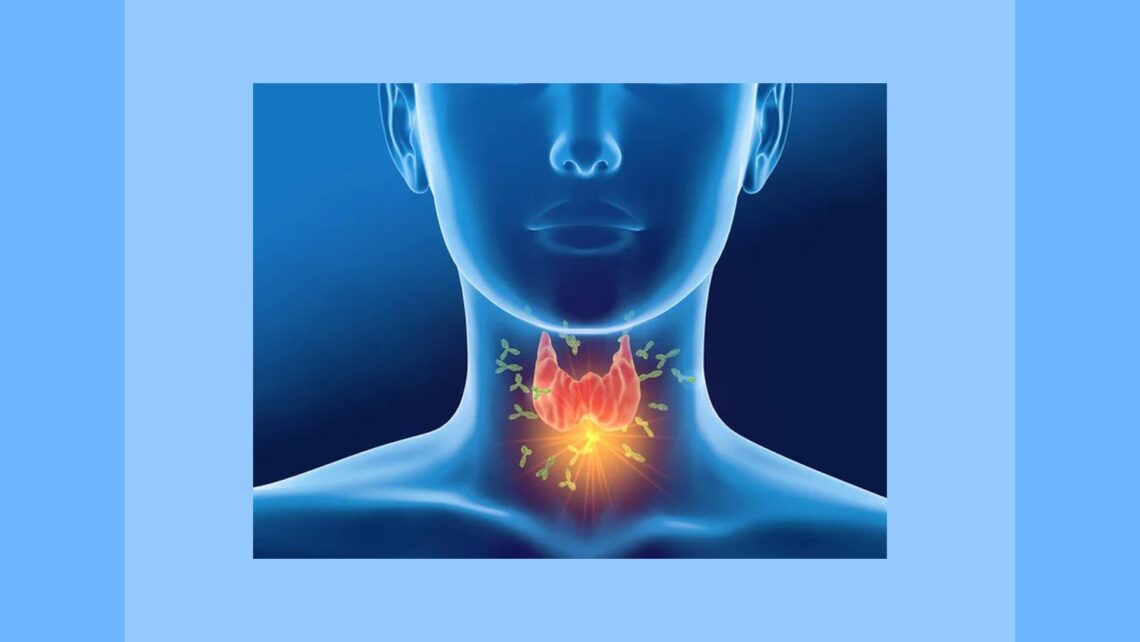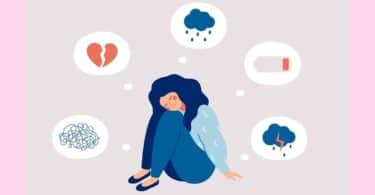This case is from a Thyroid Research Project and were presented in the Indian journal of Homoeopathic Medicine Vol No-28 Issue No.3 & 4. These cases have been scientifically explained and demonstrates the effectiveness of homoeopathic medicines in these ” incurable autoimmune diseases “, when the similimum is identified and basic miasmatic concepts are applied.
CASE
NAME : Mrs. AJS
Age : 36 yrs.
Qualification : B.E. (1979) M.E. (1981)
Father : B. Sc. (Physics), Statistical Officer suffering from D.M., Ca. Mandible
Mother : B. A. Housewife
Siblings : 4 Sisters :- 37 yrs. (M.Sc.), 26 yrs. (B Pharm.), 21 yrs expired 1983, 24 yrs.
Married : August 1983
Husband : M. Tech., Consultancy
Chief Complaint :
Spine – Severe pains
Since 8 mths. Weight loss ( 4 Kgs. In 2 mths.)
Routine investigations and Thyroid Hormones : N.A.D.
Treated with Calcium supplements.
Thyroid Swelling on face
June 1993 Change of voice
Since 6 mths. Weight gain 6 kgs. Over last 4 months.
On repeat investigations diagnosed as having hypothyroidism. She Was put on T. Eltroxin 2 O.D.
T.S.H.= More than 60
Antithyroid antibody Titre : Positive 1 :400
Associated Complaints :
Sinusitis Pain > Steam Inhalations
Since 5 yrs. Nose block
Patient as a person :
Cr./Av.: Nothing particular
Perspiration : Moderate, No stains
Offensive recently
Menses : Regular. Dark red
Stains indelible since the beginning
Thermal State : sun : <papules on skin
Fan ; <Heaviness of Head, Stiffness of hand
Covering : Only in winter, 2 sheets
Bath : Hot in all seasons
C3H2
Sleep : Normal
Dreams : Occasional, frightful, used to scream in sleep before. Robbers, Examination.
Life Space :
The patient is from a well-educated family of Baroda. She is the second of five sisters. Her father had a transferable job but her mother remained in Baroda for the children’s education. Her father is a strict disciplinarian, and wants things done on time and perfectly. Her mother is very calm and quiet. The patient used to have tiffs with her elder sister but would eventually let go of things. Overall the family environment was protective and they shared healthy relationships with each other.
The patient decided to do Engineering against her parent’s wishes as they wanted her to be a Doctor. She did appear for an open medical entrance exam, she was still fascinated by her maternal uncles who were engineers. In school she used to take part in extra-curricular activities like games, dancing, debates, etc. She did not have any anticipatory anxiety before going on stage. Before exams, she would rarely get nervous, even if they were told that the correction was going to be strict. In college she confined herself to academics only. She stood 3rd in B.E. and 1st in M.E.
When the patient was in her final year B.E. her third sister developed Intususception. Though she was operated upon immediately she did not survive. The surgeon later confessed that he had not given her prophylactic antibiotics. This was a great shock for the entire family. They decided against filing a case as they would not gain anything by it. The patient cried during the interview while describing this incident.
The patient married in Bombay into a conservative family comprising of her father-in-law (FIL), mother-in-law (MIL), 1 elder sister-in-law (SIL) who is a spinster and her husband. Her husband was in service the first two years, then later started his own consultancy. Her FIL was trading in steel but retiered five years back. Her MIL is a very irritable person. They have frequent conflicts, but the patient prefers to remain quiet to avoid aggravating the situation. She had initially taken up a job when her in-laws were in America. When they returned, they did not approve of it. Her husband asked her to leave the job. She tried to argue about their difference in attitudes towards her and her SIL , her husband tod her not to make any comparisons. She resigned her job without further hesitation. The family makes a lot of demands on her although they have a full time servant. Her SIL interferes in everything and expects the patient to do all the work. Her husband supports them and keeps insulting her. His attachment towards his mother and sister and his insensitivity towards his wife, leads to serious conflicts between her husband and wife. Once they even considered separation, but they later patched up.
The patient described an incident while her husband was away on tour, when her SIL gave her food mixed with insecticide with the help of the maid-servant, who later confessed to her. Initially she did not believe it, but when she was convinced, she told her husband. They got it tested in a laboratory, which proved positive. Her husband’s eyes were poened. They decided to live separately, but before that her SIL separated with insinuations of the patient poisoning her. The patient avoided telling her parents about all this to avoid hurting them. But when her MIL accused her of poisoning her SIL in front of her mother, she had to give the whole story to her innocence. Now her In-laws shift between her’s and her SIL’s house. She does her duty towards, them, but her MIL continues to find fault with her.
A few years ago, her husband was away,when she wanted to take up a job, but her In-laws refused to let her go for the interview. She wrote to her husband complaining about this, asking him why he married a qualified woman when he only wanted a housewife. Her husband wrote to his parents to let her do what she wants. She then took up a job as a lecturer in an Engineering College. Her husband is more supportive now and helps her in the house-work whenever required, though he still insults her at times.
Discussion:
Here is a sensitive person who has experienced the tortures of MIL and SIL along with her husbands insensitivity towards her and yet she has no bitterness towards them. She has an independent temperament with an ability to stand firm in adverse circumstances, and a strong drive which helped her carry on and helped her adapt to her environment. Although she has paid the price at the physical level in the form of Autoimmune Thyroiditis, she has shown a stability at the level of the mind. This clinched the diagnosis of Silica. At the physical level a) Dreams of robbers b) Menses: Stains fast, supported the diagnosis of Silica. If we examine the sequence of events, we observe a wounded psyche.
———–>
Followed by backache and weight loss
—————–>
Breakdown with Autoimmune Thyroid disease,
Manifesting in a hypothyroid state. This would indicate a Tubercular Miasm.
Susceptibility : Moderate
Similarity : Total
Sensitivity : Moderate
Structural changes : Moderate hypothyroid state
Miasm : Tubercular
With this understanding, treatment was started with the 200 potency.
FOLLOW UP TREATMENT:
| Date | Backache | Weakness | Face Swelling | Pulse | Other Symptoms | Treatment |
| 1/7/92 | – | – | – | – | – | Silicea 200 III H.S. |
| 8/7/92 | > | > | > | 100/48 | Silicea 200 III H.S. Eltroxin stopped | |
| 15/7/92 | > | 0 | > | 100/48 | Silicea 200 III H.S. | |
| 22/7/92 | > | 0 | > | Silicea 200 H.S x 7d | ||
| 29/7/92 | 0 | > | Silicea 200 H.S. x 7d | |||
| 5/8/92 | > | < | > | Mind- relaxed | Silicea 200 H.S. x 7d | |
| 14/8/92 | < | < | > | Hdk 4d; cough ++; thirst inc; chilly | Ars Alb 30; Tds x5d | |
| 19/8/92 | > | > | > | 100/46.5 | Silicea 200 H.S. x 7d | |
| 26/8/92 | SQ | SQ | > | TSH 0.5 | Silicea 200 II H.S. | |
| 9/9/92 | > | > | > | Placebo | ||
| 23/9/92 | > | > | > | Face: Papules-scars | Silicea 200 II H.S. | |
| 7/10/92 | > | > | > | >+ | > | Silicea 200 II H.S. |
| 21/10/92 | > | > | > | 86/46.6 | Emotional+ Cries on seeing sad movies | Silicea 200 III H.S. |
| 4/11/92 | > | > | > | 80/46.5 | Silicea 200 III H.S. | |
| 11/11/92 | > | > | > | 86/46.5 | Placebo | |
| 2/12/92 | > | > | > | 100/47.5 | Placebo | |
| 9/12/92 | > | > | > | 100/47.5 | Placebo | |
| 16/12/92 | > | > | > | 100/47.5 | Silicea 200 I H.S. | |
| 23/12/92 | > | > | > | 106/47.5 | Silicea 200 I H.S. | |
| 6/1/93 | > | > | > | Nausea <morning; bitter taste in mouth | Ars Alb 200; 6 hrly | |
| 8/1/93 | SQ | SQ | > | > | Silicea 200 II H.S. | |
| 12/1/93 | >70 % | >70 % | >70 % | Silicea 200 III H.S. weekly | ||
| 11/2/93 | > | > | > | Placebo | ||
| 18/2/93 | Overall > | Silicea 200 H.S. x 8d | ||||
| 4/3/93 | Overall > | Placebo | ||||
Investigation:
Date T T TSH Antithyroid antibody
7/4/92 168 12.5 –
25/6/92 – >60 +ve 1:400
16/8/92 – 0.5 –
28/10/92 – – 0.5 -ve<1:100
1/2/93 – – 1.8 –
Analysis:
The patient is now asymptomatic euthyroid and the antithyroid antibody test have became negative. She had presented with a significant rise in ATA titre and symptoms of thyroid hypofunction. In the early phase of treatment she had suffered from two acute illnesses.
Let us make some clinico-immuno-pathologic correlations to have a better appreciation of the state of susceptibility and posology indicated.
It is necessary to revise briefly the natural evolution of the disease. A variety of abnormalities in hormone biosynthesis is seen in patients with Hashimoto’s Disease. This can lead to hyper-secretion of TSH.
First stage: Characterized by the presence of thyroid hyperfunction. Serum TSH levels and RIAU are increased. The patient is still eumetabolic, indicating that the glandular response to compensate for the abnormalities in hormone biosynthesis.
Second stage: With the passage of time the ability of the thyroid to respond to TSH decreases. RIAU and Sr. T concentration progressively approach sub-normal values. The next step in the evolution of complete thyroid failure is the development of “sub-clinical hypothyroidism”.
Our patients are in the first stage (rather a terminal phase of this stage) as the T3 and T4 values are normal, TSHis high but less evidence of hypo-functioning. Thus the susceptibility is moderate. Through multiple doses it is possible to combat autoimmune activity faster and restore the balance. One can afford to be aggressive but with utmost precaution taking care of the sensitivity. One can then withdraw Eltroxin faster, if the patient is already on it or avoid it if it has not been started yet.
When the patient presents in the second stage, with significant autoimmune destruction of the thyroid, one’s approach is quite different.
The prodromal phase of the disease gives us valuable information. In the first case, acute fever with constitutional symptoms indicates the constitutions’ fight to deal with the stress. Then localization occurs, followed by signs of exhaustion. This phenomenon has been explained in Henseley’s concept of stress. His ideas of general adaptation syndrome and local adaption syndrome, if abstracted further and adapted to comprehend the evolution of chronic disease, would help us handle the state of susceptibility better, and so satisfy it as desired by Stuart Close, and thus achieve an Ideal Cure.
Dr. Praful M Barvalia
Shalibhadra Society
148, Hingwala Lane Extention
Near Popular Hotel
Ghatkoper (East)
Mumbai 400 077
Ph: 022 – 2516 5985
022 – 2513 4467
Email: [email protected]
Website: www.holisticfoundation.org





